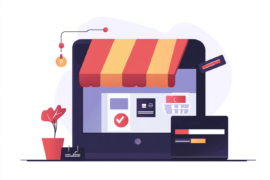This article may contain references to products or services from one or more of our advertisers or partners. We may receive compensation when you click on links to those products or services. Nonetheless, our opinions are our own.

Updated by Albert Fang
Introduction
Every serious entrepreneur knows that they need a solid business plan, which includes things like the products and/or services that they will be offering and the target market in which they will be offering these products/services. However, there are many more things that go into running a successful business. There’s the unseen side, such as business insurance and employee recruiting; And then there’s the side that customers and clients see: the products and the logo— the brand as a whole.
There are many resources out there that can help expand your business, resulting in reaching a greater audience and turning potential customers into repeat customers. There are several things that need to be done to ensure that your business thrives, and here are a few of those key things, starting with your business plan and ending with ways to attract more customers.
The Business Plan
For those who don’t know, there’s a template and a system for creating a proper business plan. A business plan explains why you’re creating your business in the first place. There are millions of businesses all over the world, so you need to state exactly how yours is different and what unique things you have to offer that other businesses aren’t offering. It lets investors and partners know your goals and all of your plans to achieve them. There are typically ten parts of a business plan, and they include:
- An Executive Summary: a compelling analysis of what you expect your business to achieve.
- The Company Description: information about your business, and your target audience.
- A Market Analysis: shows that you understand the nature of the market you’re entering.
- The Management and Organization Description: describes managers and other employees, along with job responsibilities.
- A List of Products and/or Services: a detailed description of products you’re offering to customers/services you’re offering to clients.
- The Marketing Plan: potential strategies to attract customers and/or clients.
- A Sales Strategy: a specific breakdown of how you’re going to present your products/services.
- The Request for Funding: the amount of money needed in the beginning and for any other business-related projects down the road.
- A Projection of Sales: annual monetary expectations.
- The Appendix: any and all relevant documentation needed for your business.
Business Insurance
Business insurance protects the entirety of your company. All businesses need some type of insurance, and it can be hard to determine what kind of insurance you need specifically. Just about every business definitely needs liability insurance, but different types of businesses require more and different kinds of insurance. Here’s a list of some of the most common types of business insurance:
- General liability insurance covers your business in the case of bodily injury.
- Professional liability insurance protects your business from mistakes in services.
- Worker’s compensation insurance covers employees in the event of illness or injury.
- Commercial property insurance protects your company property.
- Commercial auto insurance covers drivers and vehicles used for business purposes.
- Commercial umbrella insurance is an extension of general liability insurance.
Hiring for Your Business
If you’re an extremely small business, you may be able to get by on your own, or with the help of close family and friends. However, once you start to expand (and what business owner doesn’t want that?), you’re going to require more assistance and a way of advertising the fact you’re hiring.
If your business has a physical location, you can go with the old-fashioned “help wanted” sign in the window. You can also advertise in newspapers, as these methods are still effective today. However, if you want to reach a wider range of people and hire the best talent, you’re going to have to enter into the digital world of hiring.
Social media is another useful employee recruitment tool. There are around four billion internet users out there, and the majority of them have some sort of social media page. Your business should also have a social media page, on whichever platform works the best for your type of business.
Job Search Sites
In today’s world, this is the most popular way to hire potential employees. But did you know that there are specific job search sites that cater to job seekers’ needs, as well as yours? For example, if you have remote job positions open, then there are job boards that allow you to specifically post for those positions. If you need someone in a management position with a lot of managerial experience, there are also job sites you can utilize to post that job position as well. Of course, you should still post job openings on the most popular sites, such as Indeed or LinkedIn because many job seekers may not be familiar with these other platforms.
Marketing Agencies
You can always enlist the help of professional marketing agencies that specializes in candidate attraction. Unlike social media and job search sites, these types of agencies work with you to market your brand to potential candidates. After this, only the most qualified candidates are selected. This makes the hiring process less stressful and time-consuming.
Marketing Your Brand
Logos
Speaking of your brand, everything your company sells and does is reflective of your entire brand. From the name of your company to the logo, that becomes engraved into your customers’/clients’ minds.
You may think that your logo isn’t significant enough to put much thought and energy behind it, but it’s actually a very important part of your company’s brand as a whole. There are several different types of logos, and the type of logo that best suits you largely depends on what type of company you are. An example would be if your company has a long, and maybe difficult name, a letter mark (acronym) logo would work well. If you’re a family-friendly company, then a mascot logo would be a good branding choice.
Website Design
Once again, this is a digital world so a website is essential to pretty much every type of business in the 21st Century. Your business’s website is the host of everything that has to do with your business. Not only should your products and/or services be listed on your website, but you should also list prices, location (if necessary), contact information, hours of operation, and any other information relevant to your business.
If you create products but don’t ship them, then you can still benefit from having a website. Maybe you only sell products in your local area, but you can still list products, product information, and prices on your website. You can even offer online orders and in-store pickup services, all while still avoiding the hassles of shipping and handling.
Create a Blog
A blog is another useful asset to your business. It can be located on your website, as a resource for more in-depth information about the products and services you offer. Maybe some of the products/services you offer are positively backed by scientific research. Your blog would be a great way to showcase those facts to your customers and potential customers. Your blog can also include your own thoughts and relevant stories as a way for your customers to get to know you better.
Affiliate Marketing Programs and Ambassador Programs
This is a relatively new way of marketing that uses less money and energy to promote your brand. With affiliate marketing, you have people promote your products on social media to encourage others to buy from you. In exchange for this service, you’ll pay the affiliate a commission, but this can be set at whatever price that works best with your budget, and this is almost always cheaper than other marketing methods.
Ambassador programs are very similar to this, but the difference is that brand ambassadors have a genuine love for your products, while affiliate marketers usually only promote your products in exchange for a monetary benefit. Both types can earn commission from the sales of your products, but your brand ambassadors are the ones driven by passion, and therefore, much more sustainable.
When your brand ambassadors promote your products on social media, their audience will be able to tell that they really love your brand, so your products are definitely worth checking out. Marketing by affiliates may seem a little more like ads, where they are clearly getting paid for their efforts.
Conclusion
Brand new entrepreneurs often only think about the details of their business plan, and look no further than that until necessary. They often forget that marketing their brand as a whole is just as important as marketing products and services. As an entrepreneur, you will also want to hire the best of the best to work for you. Your employees represent your brand just as much as you and your products do, so the recruitment process is something you don’t want to rush. Overall, you want to do every necessary thing it takes to make sure your business thrives, which includes using the best resources, tools, and strategies.

Reviewed and edited by Albert Fang.
See a typo or want to suggest an edit/revision to the content? Use the contact us form to provide feedback.
At FangWallet, we value editorial integrity and open collaboration in curating quality content for readers to enjoy. Much appreciated for the assist.
Did you like our article and find it insightful? We encourage sharing the article link with family and friends to benefit as well - better yet, sharing on social media. Thank you for the support! 🍉
Article Title: Resources, Tools, and Strategies That Go Into Running a Successful Business
https://fangwallet.com/2021/07/09/resources-tools-and-strategies-that-go-into-running-a-successful-business/The FangWallet Promise
FangWallet is an editorially independent resource - founded on breaking down challenging financial concepts for anyone to understand since 2014. While we adhere to editorial integrity, note that this post may contain references to products from our partners.
The FangWallet promise is always to have your best interest in mind and be transparent and honest about the financial picture.
Become an Insider

Subscribe to get a free daily budget planner printable to help get your money on track!
Make passive money the right way. No spam.
Editorial Disclaimer: The editorial content on this page is not provided by any of the companies mentioned. The opinions expressed here are the author's alone.
The content of this website is for informational purposes only and does not represent investment advice, or an offer or solicitation to buy or sell any security, investment, or product. Investors are encouraged to do their own due diligence, and, if necessary, consult professional advising before making any investment decisions. Investing involves a high degree of risk, and financial losses may occur including the potential loss of principal.
Source Citation References:
+ Inspo






























![How to Hire Fintech Software Developers [Cost & Factors] fintech software engineers](https://fangwallet.com/wp-content/uploads/2025/03/fintech-software-engineers-270x180.png)













